<< Previous | Displaying results 376-400 of 489 for "warsaw" | Next >>
Roza's family moved to Warsaw in 1934. She had just begun college when Germany invaded Poland in 1939. In 1940, the Germans sealed the Warsaw ghetto, where her parents were shot during a roundup. Roza escaped and went into hiding. From her hiding place she saw the burning of the ghetto in the 1943 uprising. She had false papers stating she was a Polish Catholic (Maria Kowalczyk), and was deported by cattle train to Germany in June 1943. She worked on a farm until liberation in 1945.
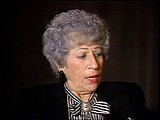
As a boy, Bill attended school in Burgsteinfurt, a German town near the Dutch border. After the Nazis came to power in Germany in January 1933, Bill experienced increasing antisemitism and was once attacked on his way to Hebrew school by a boy who threw a knife at him. In 1936, he and his family left Germany for the Netherlands, where they had relatives and thought they would be safe. However, after Germany invaded the Netherlands in May 1940, antisemitic legislation--including the order to wear the Jewish…
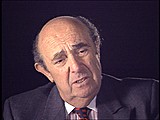
As a boy, Bill attended school in Burgsteinfurt, a German town near the Dutch border. After the Nazis came to power in Germany in January 1933, Bill experienced increasing antisemitism and was once attacked on his way to Hebrew school by a boy who threw a knife at him. In 1936, he and his family left Germany for the Netherlands, where they had relatives and thought they would be safe. However, after Germany invaded the Netherlands in May 1940, antisemitic legislation--including the order to wear the Jewish…
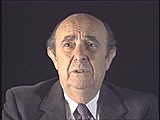
Sophie was born Selma Schwarzwald to parents Daniel and Laura in the industrial city of Lvov, two years before Germany invaded Poland. Daniel was a successful businessman who exported timber and Laura had studied economics. The Germans occupied Lvov in 1941. After her father's disappearance on her fifth birthday in 1941, Sophie and her mother procured false names and papers and moved to a small town called Busko-Zdroj. They became practicing Catholics to hide their identities. Sophie gradually forgot that…
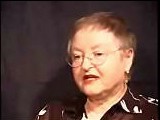
At the Nuremberg trials, Allied prosecutors submitted documentation left by the Nazi state itself. This evidence is a lasting refutation of attempts to deny the Holocaust.

Explore a timeline of key events during 1942 in the history of Nazi Germany, World War II, and the Holocaust.
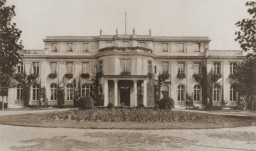
The Order Police (Ordnungspolizei, Orpo) were Nazi Germany’s uniformed police forces. They became perpetrators of horrific crimes and played a significant role in the Holocaust.
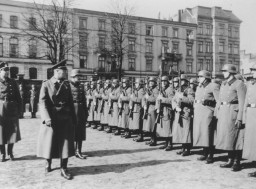
The Krakow ghetto in German-occupied Poland held over 15,000 Jews. Learn more about Krakow and the ghetto’s history during the Holocaust and WWII.
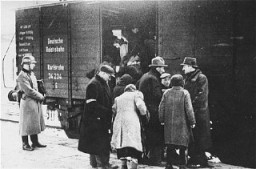
Wladyslaw was born to Catholic parents in Russian-occupied Poland. He grew up in Plock, a town located in a rural area north of Warsaw. Wladyslaw married in 1918 and he and his wife, Marie, raised four children. 1933-39: Wladyslaw worked as a bookkeeper, and then as an accountant for a local farmers' cooperative. In 1931 he was sent to the town of Wyszogrod to close a failing branch of the farmers cooperative. A year later, he organized a new, successful cooperative in Wyszogrod with local farmers and…
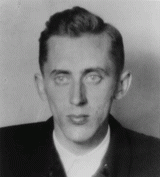
Benjamin was born in the industrial city of Lublin to a large, Yiddish-speaking Jewish family. He attended public school, and after he graduated at the age of 14, he apprenticed at the same tannery where his father was the tannery master. 1933-39: After completing his apprenticeship, Benjamin became the assistant tannery master. After his father's death in 1938, he became the production tannery master. He and his wife, Gucia, lived with his mother at 50 Lubartowska Street. In 1938 the Frydmachers had a…
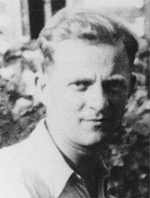
Rozia was the second-oldest of nine children born to religious Jewish parents in Starachowice, a town in east-central Poland. Their small one-story house served as both the family's residence and their tailor shop. The tailoring was often done in exchange for goods such as firewood or a sack of potatoes. Rozia worked in the shop sewing women's clothing. 1933-39: Rozia married a Jewish tailor from Radom, a large town some 60 miles south of Warsaw. The couple settled in Starachowice, and they ran a tailor…
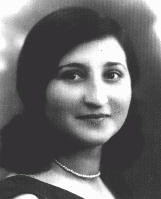
Mayer was born into a Jewish family in a village near Warsaw. His family was active there in the workers' movement. They decided to emigrate when Mayer was a child; his father hoped to find work in Argentina. As a young man, Mayer was arrested for being a communist. In prison, he organized a hunger strike. The police released him to keep him from recruiting the other prisoners to communism. 1933-39: Mayer joined one of the International Brigades and went to Spain to fight in the civil war against Franco…
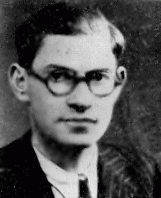
After the German invasion in 1939, Edwarda and her family left Warsaw and moved to a small village near Lublin. Her parents were murdered by German soldiers in 1942. Edwarda was eventually taken in by the Rorat family. The Rorats owned a village store. She lived under their protection throughout the war and continued to live with them after liberation. She completed her education in Poland and later immigrated to the United States.
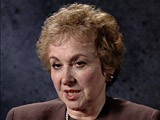
The Germans invaded Poland in 1939 and established a ghetto in Warsaw in 1940. After her parents were deported, Doris hid with her sister and other relatives. Doris's sister and an uncle were killed, and she learned that her parents had been killed. Her grandmother committed suicide. Doris was smuggled out of the ghetto and lived as a non-Jewish maid and cook, but was ultimately deported to the Ravensbrück camp. Upon arrival there, Doris and her friend Pepi contemplated swallowing poison, but decided…
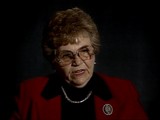
John Dolibois immigrated to the United States in 1931 at the age of 13. After graduating from college, Dolibois joined the 16th Armored Division of the US Army. Due to his German language skills, he became involved in military intelligence. He returned to Europe in this capacity toward the end of World War II. Dolibois interrogated German prisoners of war, including leading Nazis, in preparation for the postwar trials of war criminals. He was later appointed US ambassador to Luxembourg, his birthplace.
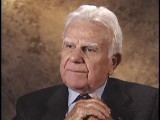
Lucine was born to a Jewish family in Lublin. Her father was a court interpreter and her mother was a dentist. War began with the German invasion of Poland on September 1, 1939. Lucine's home was raided by German forces shortly thereafter. Soon after the German occupation of Lublin, Jews there were forced to wear a compulsory badge identifying them as Jews. A ghetto in Lublin was closed off in January 1942. Lucine survived a series of killing campaigns and deportations from the ghetto during March and…
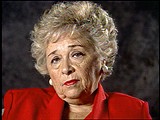
Explore a timeline of key events in the history of the Lublin/Majdanek camp in German-occupied Poland.
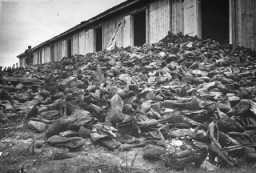
The SS was the elite guard of the Nazi regime and became a virtual state within a state in Nazi Germany. Learn about its role in carrying out Nazi policies.
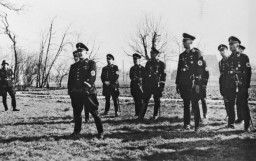
In 1940, the Nazis established Lublin (Majdanek) concentration camp in Lublin, Poland. Learn more about camp administration.
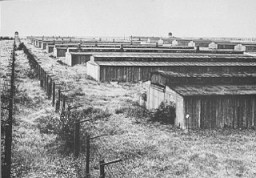
Learn about the Stutthof camp from its establishment until liberation in May 1945, including conditions, forced labor, subcamps, and death marches.
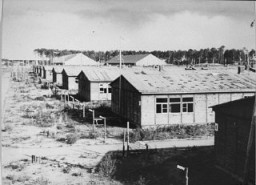
Learn more about the modern misuse of images and symbols from the Holocaust and how this distortion can lead to antisemitism.
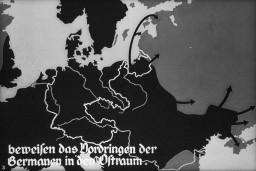
The Theresienstadt camp/ghetto served multiple purposes during its existence from 1941-45 and had an important propaganda function for the Germans. Learn more.

Facing overwhelming odds, Jews throughout occupied Europe attempted armed resistance against the Germans and their Axis partners.

In September 1939, the Germans launched a campaign of terror intended to destroy the Polish nation and culture. Learn more about the German occupation of Poland.
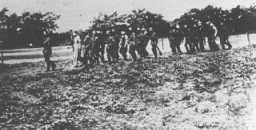
Learn more about Polish Jewish refugees that relocated to Lithuania between 1939-1940.
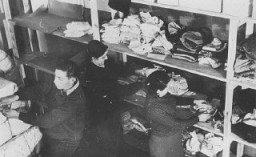
We would like to thank Crown Family Philanthropies, Abe and Ida Cooper Foundation, the Claims Conference, EVZ, and BMF for supporting the ongoing work to create content and resources for the Holocaust Encyclopedia. View the list of donor acknowledgement.